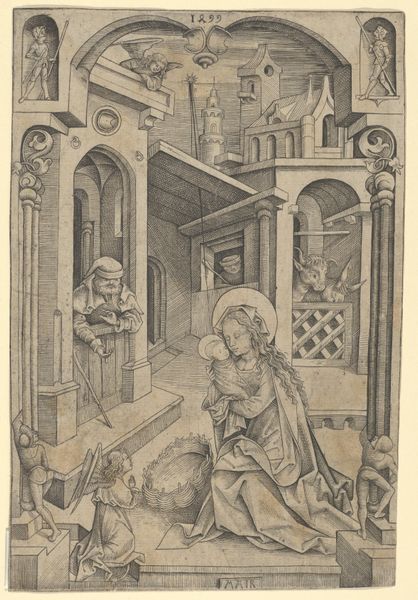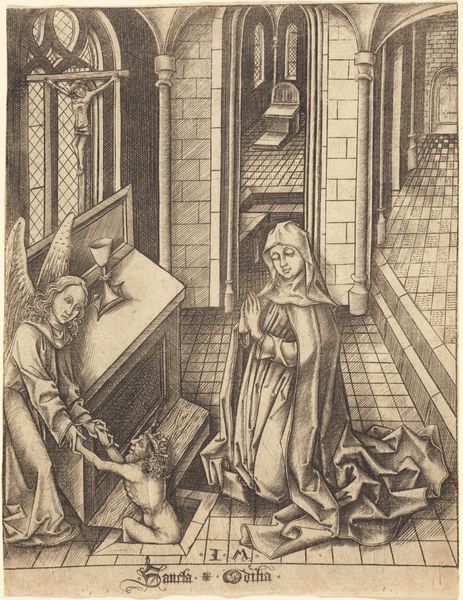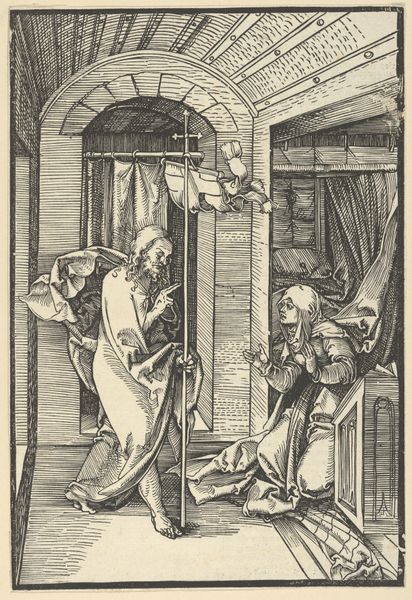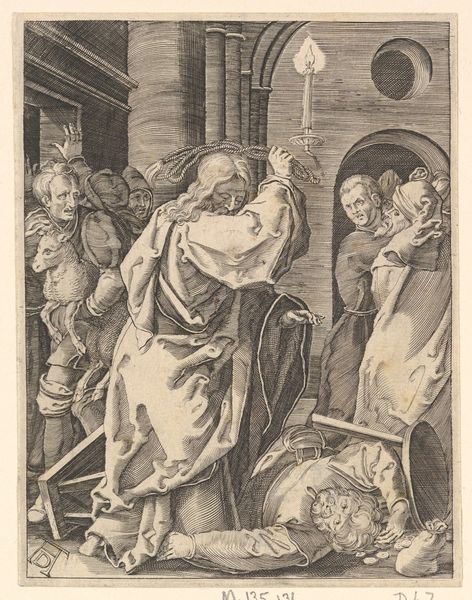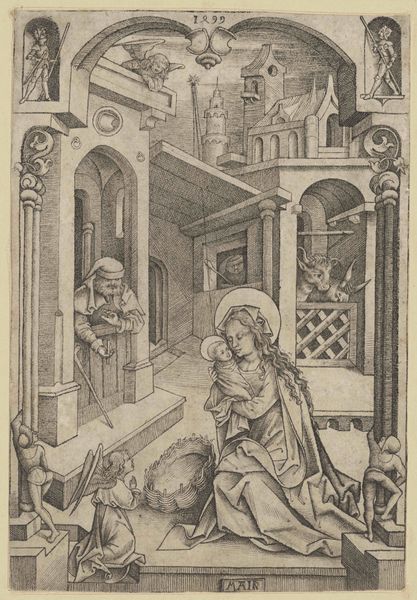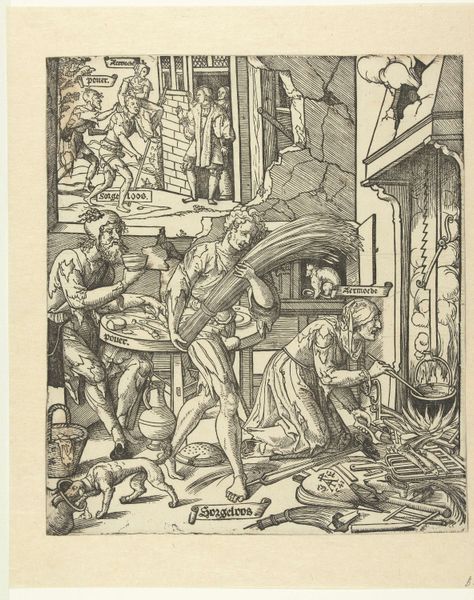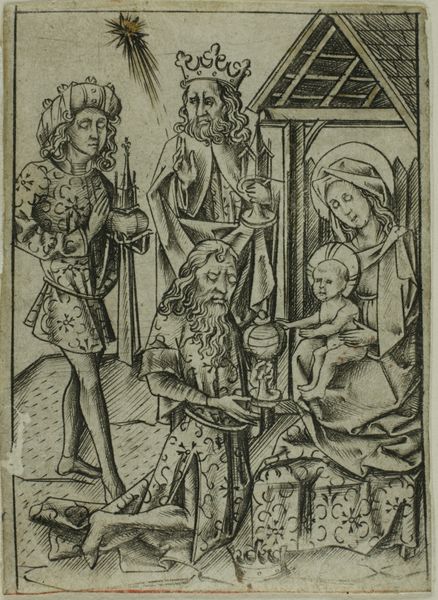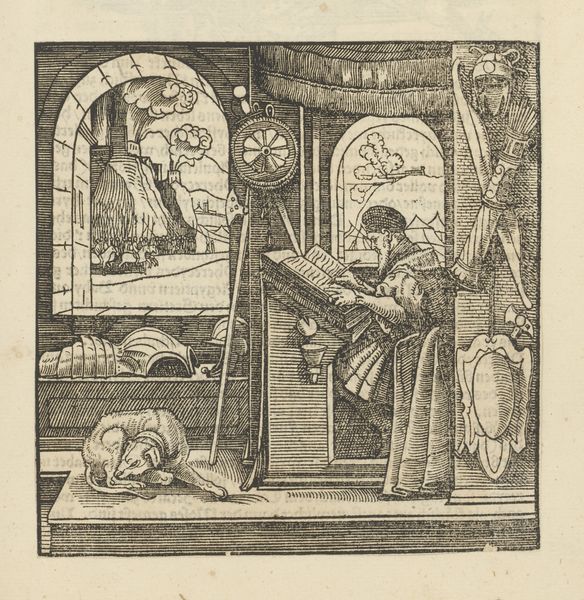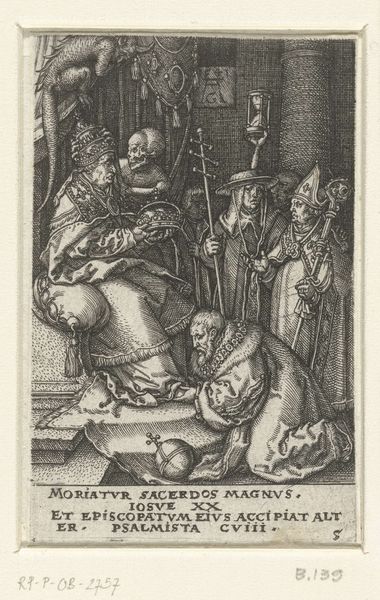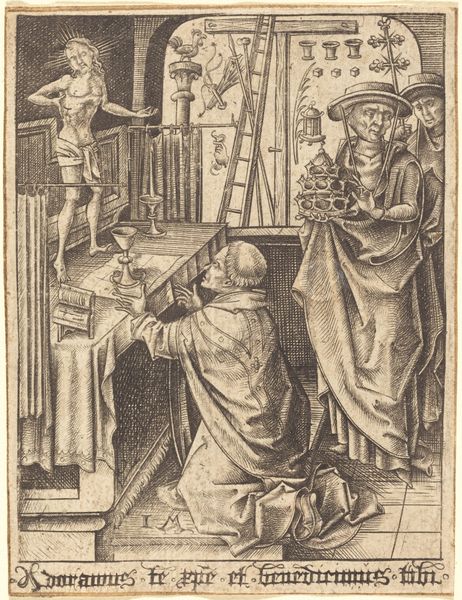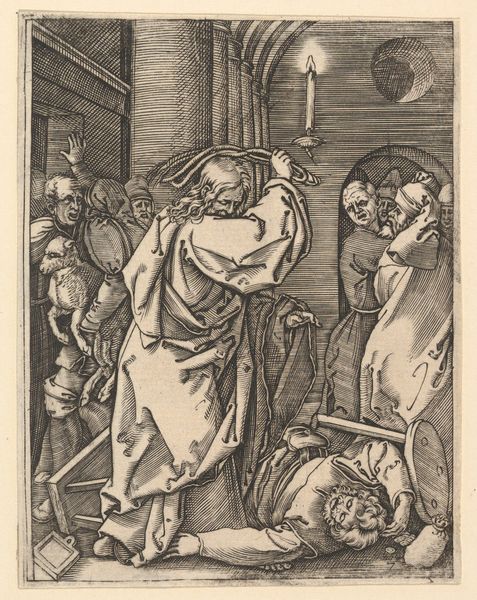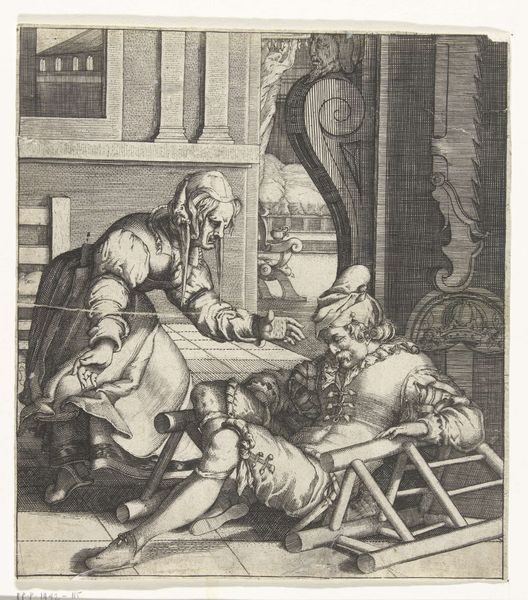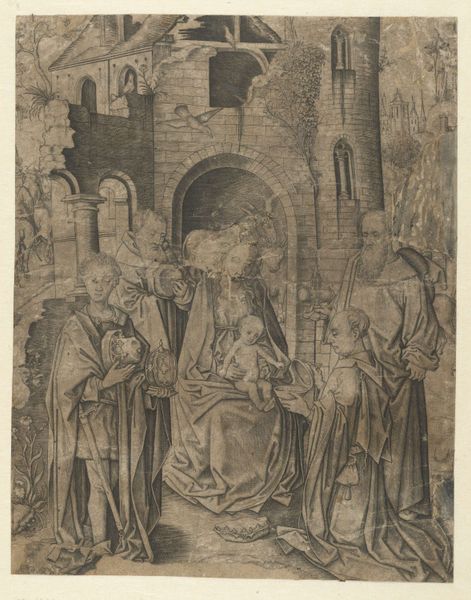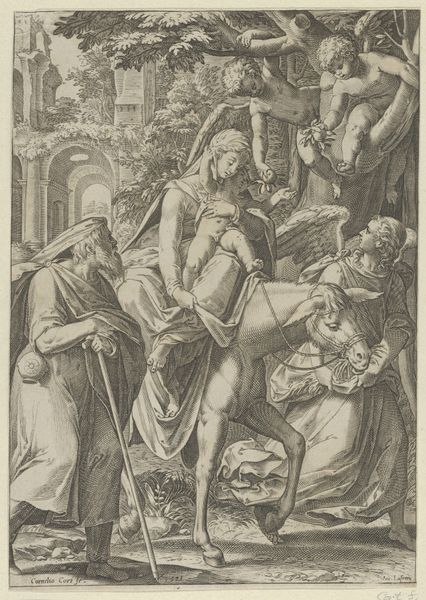
drawing, intaglio, engraving
#
drawing
#
medieval
#
intaglio
#
figuration
#
line
#
history-painting
#
northern-renaissance
#
engraving
Dimensions: height 320 mm, width 241 mm
Copyright: Rijks Museum: Open Domain
Curator: Looking at this engraving, there's an almost overwhelming level of detail achieved through what must have been incredibly meticulous labor. Art Historian: You’re right, it’s fascinating. This is "Saint Bernard Kneeling Before the Virgin and Child" by the Master IAM of Zwolle, dating from around 1470 to 1485, and it encapsulates a fascinating period in the rise of print culture. Curator: IAM, intriguing. I'm drawn to how the cross-hatching defines forms – creating light and shadow, texture of fabric, the almost photorealistic folds and drapes, it gives this work volume in an otherwise monotone image. This engraving would have taken so many hours of dedicated, skilled labor. How does its accessibility relate to the wider culture? Art Historian: Prints like this democratized imagery. Prior to this, only the wealthy could afford painted religious scenes. These engravings could be reproduced and disseminated widely, reshaping devotional practices across different social strata, but not only religious beliefs, it shows how museums began sharing culture, how images and figures shaped political beliefs, especially regarding religion. Curator: It's interesting to see how IAM navigates religious doctrine, I find that engravings served both a devotional and educational purpose. What do we know about Zwolle? Were there distinct schools or workshops churning these out? Because there’s a formulaic rendering in play. Art Historian: Zwolle was a centre for late medieval religious reform and the influence of the "Devotio Moderna" movement is palpable in this artwork. It emphasized personal piety, a message that prints helped to amplify. Engravings offered more people than ever the tools of self exploration, in a time of dramatic changes and growing social awareness of inequalities and exclusion. Curator: Yes! And the mass production changed our ways to accessing art, art-making techniques became more about replication than crafting unique single items. Art Historian: Absolutely. Engravings played a crucial role in shaping Northern Renaissance visual culture. This piece reminds us how art operates within social, political, and even technological landscapes, always transforming the world around us and in direct communication to events of a given period. Curator: I now appreciate the artist’s effort as not only a creator of the artwork itself but also in their influence in the democratization of imagery.
Comments
No comments
Be the first to comment and join the conversation on the ultimate creative platform.
